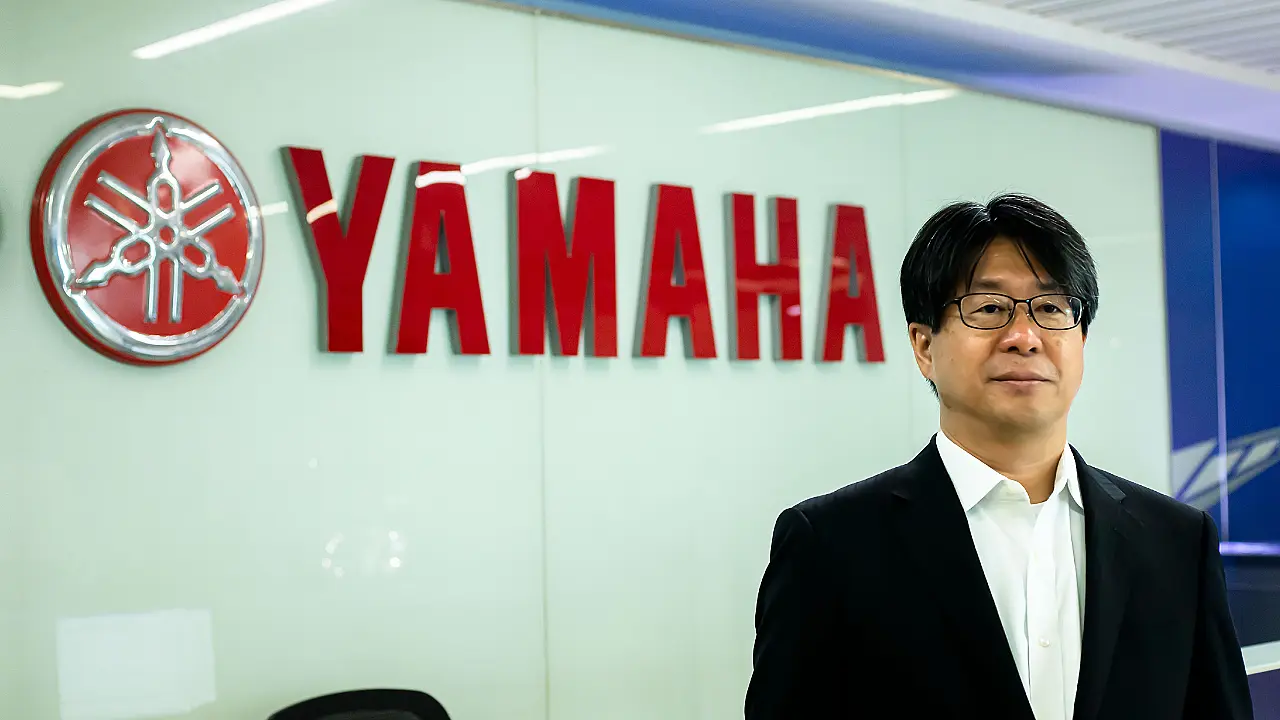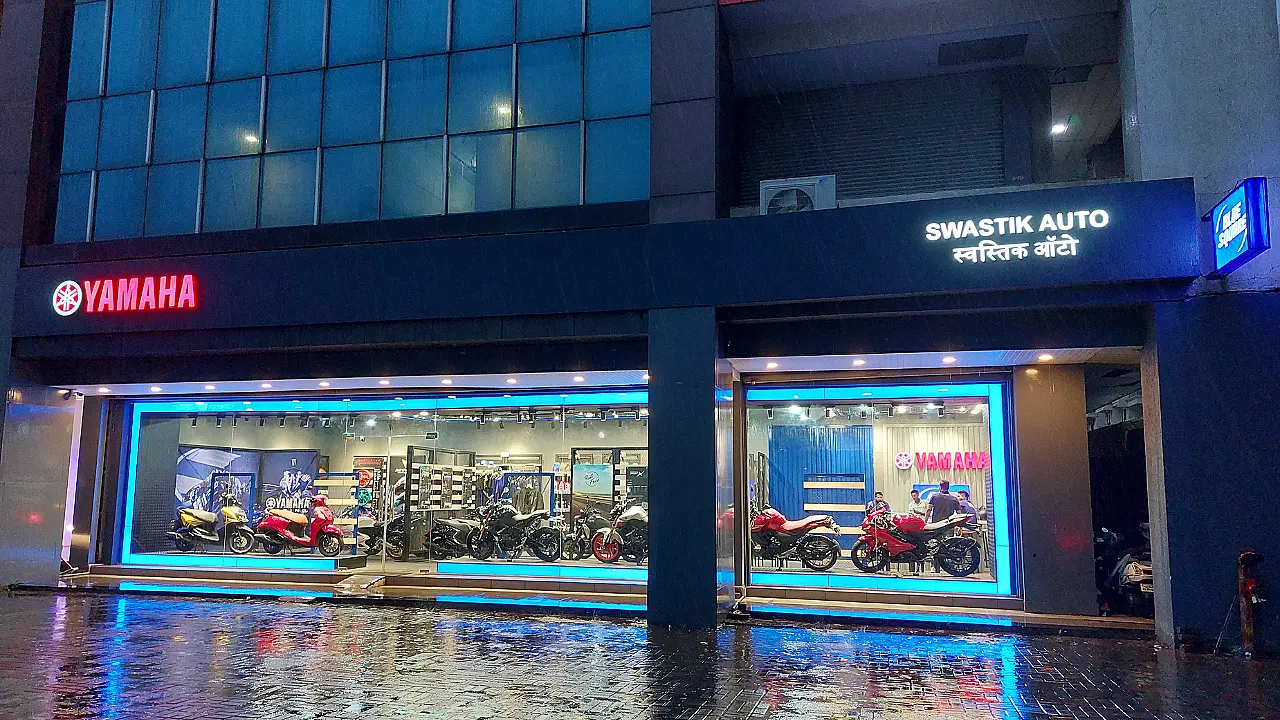
For Eishin Chihana, Yamaha is all about aspiration and this is where India’s youth power will play a big role going forward.
“In the same way RX 100 established our brand image decades earlier, Yamaha has always been the aspirational brand for youngsters. We will continue in this direction and will target the 18-25 age group,” the Chairman of Yamaha Motor India group of companies tells this writer in his Chennai office.
At present, nearly 85% of its customers are in the 18-29 age group range, which is music to his ears. “For us, the young and upper middle class do not buy our bikes as a means of transportation but as a tool for their lifestyle. We are not selling motorcycles but creating feelings of aspiration and excitement to these customers through our products,” continues Chihana.
It is precisely for this reason that he constantly tells his marketing staff not to think about the “30 plus” age group but focus more on the 18-25 bracket which forms a major base of Yamaha customers. As he explains, the age group of 18 already constitutes a major part of India’s population and is eligible to ride motorcycles.
Likewise, there is another significant mass which is 17 years old and further down are the next age group levels of 16 and 15, which are itching to get their hands on a bike. As they await their turn to qualify for a riding licence, each year will see a large mass of potential customers entering the two-wheeler arena.
“This is enough to keep us going every year. Our target is the young buyer who is attracted to our aspirational and racing image,” says Chihana. The Moto GP scheduled in September will be yet another opportunity to showcase the Yamaha image and since last year, the company’s Call of the Blue campaign has also kicked off in earnest while targeting youngsters.
Catching Them Young
The Yamaha Motor India Chairman says 17-year-olds will observe their older counterparts on bikes and eagerly wait to turn 18 and get on to their machines too. This is where showrooms like the Blue Square outlets will play a big role in creating this “cool image” and offer optimal customer experience.
Chihana is clearly pleased that this strategy is paying off even while his company has a lot of catching up to do in market share vis-à-vis other rivals like Hero, TVs, Bajaj and Honda. From his point of view, what is more important is that Yamaha is now back from the brink with a clear focus on the premium segment and urban markets.
“Five years ago we were also in rural markets but could not cope with strong competition from local players. It was pointless trying to create a position in this space though we tried hard in creating a strong sales/supplier network,” he recalls.
It was only after 2018 that the Japanese auto brand decided to shift focus to urban buyers while creating a network in metros. “People do ask me why we are not in rural or have a commuter motorcycle to offer and my answer is that we will only incur losses if we do this,” says Chihana.
Planning Ahead
According to him, those who have experienced Yamaha’s commuter bikes in the past have nice things to say about its quality levels. However, it meant a lethal mix of low volumes and high production costs which only led to losses. “With such high costs and high quality, it was a recipe for disaster. We decided to change track by selling aspiration and not just transportation tools,” he adds.
It is also in sync with the brand’s DNA of offering high performance, compact and lightweight bikes which defines Yamaha. This DNA has the potential to grow and it is keeping this in mind that the company is preparing for the future.
As Chihana says, the current buyer group of 25 years old will become 30 in five years and the rider of the R15 motorcycle will earn more in the coming years and naturally seek a bigger capacity engine. Yamaha is now planning to launch the MT-03 and R3 during the course of this fiscal to meet this requirement of the next range of buyers.
“After some years, those customers will need another step-up bike and we can introduce limited numbers of R7 and MT-07. Between 2023 and 2030, we can prepare this step-up structure for new customers. This will be our key focus where stylish, sporty and exciting bikes will fuel aspiration,” says Chihana. In the process, it will be a profitable proposition for not only the manufacturer but dealers and suppliers too.
Electric Plans
The topic turns to electric two-wheelers which have been hitting the headlines quite consistently in recent months. “We definitely believe in the growth story of electric motorcycles and scooters in India,” he says. The current estimates are that two-wheeler production will be around 25 million units by 2030 of which electric will account for 30%.
This by itself is “a huge number” and Chihana is hopeful that Yamaha will have at least two models to offer. Prior to taking charge in India, he was in Japan working on the electric scooter development project for Europe and Taiwan. It was after he came to India in December 2021 did the new Chairman realise that the pace of transition to electric was also happening rapidly.

Yet, there were points to ponder over beyond the brouhaha that followed the spate of fires and the need to focus more on safety. While buyers of electric scooters in Europe are typically those who are green-oriented and concerned about the environment, those in India are more attracted to its lower running costs compared to petrol.
Economy clearly takes precedence over CO2 emissions which is not entirely surprising in a country where per capita income levels are not as high as Europe. “For Yamaha, our DNA is aspiration which is about exciting, sporty and stylish bikes for the youth,” says Chihana. This means that the targeted customer for electric is different and the product positioning, therefore, needs to be sharper.
Brand Image
“It has to be unique and aspirational along with performance and this is the challenge. We can create our own unique value and positioning in electric,” he adds. While reiterating that he is “pushing a lot for electric” with headquarters in Japan, he is also aware that this should be in sync with the Yamaha brand image and its target audience in India.
Between now and 2030, the internal combustion engine (ICE) will still account for a lion’s share of two-wheelers and the Japanese automaker will continue to focus on this space with new products. “In the drive towards carbon neutrality, we have a strong position in ethanol expansion. We have the technology of E85 and E100 in Brazil and can bring those engines to India,” says Chihana.
By increasing the use of ethanol, “we can preserve ICE technology” while also protecting the interests of the supporting ecosystem comprising suppliers, dealers etc. If everything turns electric, he adds, there will be no oil and spare parts whereas ethanol can still contribute to the business of sugarcane farmers. As he puts it, crude oil imports will reduce thanks to ethanol which will be a good thing for India too.
There is now a throwback to the past where the RX100 comes up as the subject of discussion. Chihana admits that he was not aware of its popularity during the heady 1980s and ‘90s till he came to India and heard people reminiscing about this iconic brand.
Reviving RX100
“I was amazed to hear this and it was evident that youngsters in that era loved it. When I visit different parts of India and listen to voices of dealers and customers, it becomes clear to me that the RX100 phenomenon was an important part of the Yamaha image and performance in India,” he says.
There have been talks of the company looking at reviving the brand but Chihana believes that this is easier said than done. “It is a big responsibility because it has such a big reputation and we cannot afford to mess up the brand image,” he says.
People loved it “so much” because of its lightweight, styling and sound but this was a 2-stroke 100 cc motorcycle which is an impossibility today since they have been phased out. “How to replicate this image with a 4-stroke bike is the challenge,” he adds.
The engine capacity will have to be at least 200 cc along with the right levels of acceleration, sound and styling. It is a tall order to reproduce the famous sound in the 4-stroke and even while there is an inherent desire to revive RX100, the company is more than aware that it just cannot afford to ruin the brand’s legacy.

“I am constantly looking for answers. People do want the RX100 but 2-stroke is not the answer and in 4-stroke, the question is how can it happen without ruining the brand and image,” he wonders. Legacy brands have been revived in the two-wheeler space with recent examples being Chetak and Jawa but it is not as if success is assured too. By the end of the day, the DNA of the brand will have to be part of its new avatar which is not the easiest of tasks.
The India turnaround story has been welcome news to the Yamaha Motor Company (YMC) management in Japan which is confident of its roadmap for the future. Since the time the focus changed to premium two-wheelers in urban/ semi-urban areas, operations have turned profitable and the tempo continues in 2023.
Larger Global Role
“India is now a robust business while Indonesia remains the biggest hub for exports to Europe. Over the next 3-4 years, however, India will become the second biggest export hub after Indonesia,” says Chihana. Once this happens, overseas shipments to Europe and Japan from India can also become a reality. “Quality and process improvements will be focus areas and we have been working closely with YMC since last year,” he adds.
Beyond the motorcycle and scooter business, headquarters in Japan is also banking on other businesses in India such as MBSI (Moto Business Service India), a mobility solutions company, as well as Yamaha Motor Solutions India, an IT solutions company which works on software development.
There is also an alliance with Hero Cycles which is also an important growth lever in the electric bicycle space. MBSI is particularly interesting since it deals with non-Yamaha products and is about asset management with a focus on electric 2/3 wheelers.
“We can learn a lot about what is happening in India and the market demand. Yamaha Motor India focuses on aspiration while MBSI learns about commercial applications with non-Yamaha products,” says the Yamaha Motor India Chairman.
There are also plans to increase the headcount at R&D by 30% to prepare for the electric era and the hiring process is underway. Eishin Chihana clearly has his eyes on the future.
Also Read